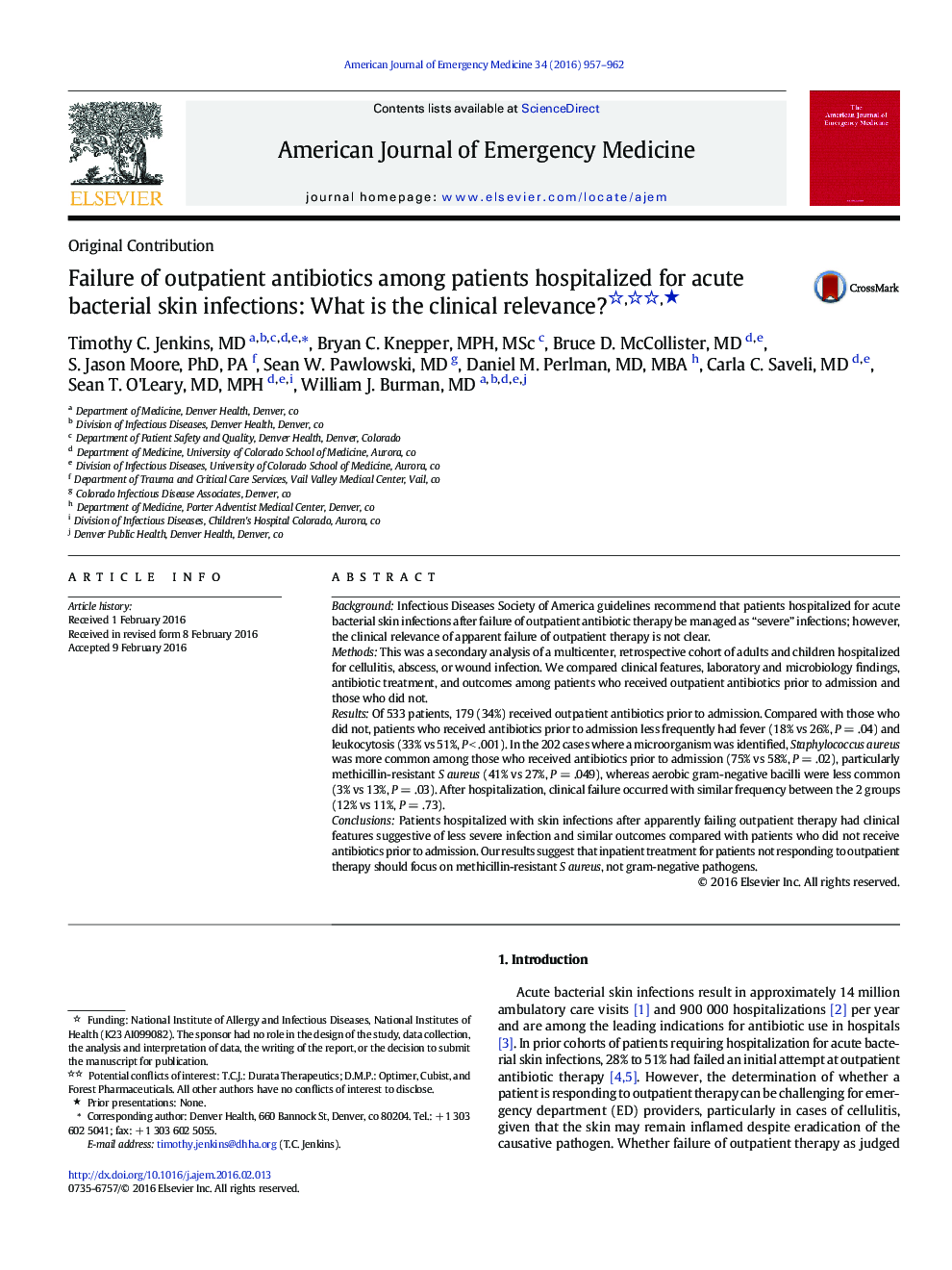| Article ID | Journal | Published Year | Pages | File Type |
|---|---|---|---|---|
| 3223106 | The American Journal of Emergency Medicine | 2016 | 6 Pages |
BackgroundInfectious Diseases Society of America guidelines recommend that patients hospitalized for acute bacterial skin infections after failure of outpatient antibiotic therapy be managed as “severe” infections; however, the clinical relevance of apparent failure of outpatient therapy is not clear.MethodsThis was a secondary analysis of a multicenter, retrospective cohort of adults and children hospitalized for cellulitis, abscess, or wound infection. We compared clinical features, laboratory and microbiology findings, antibiotic treatment, and outcomes among patients who received outpatient antibiotics prior to admission and those who did not.ResultsOf 533 patients, 179 (34%) received outpatient antibiotics prior to admission. Compared with those who did not, patients who received antibiotics prior to admission less frequently had fever (18% vs 26%, P = .04) and leukocytosis (33% vs 51%, P < .001). In the 202 cases where a microorganism was identified, Staphylococcus aureus was more common among those who received antibiotics prior to admission (75% vs 58%, P = .02), particularly methicillin-resistant S aureus (41% vs 27%, P = .049), whereas aerobic gram-negative bacilli were less common (3% vs 13%, P = .03). After hospitalization, clinical failure occurred with similar frequency between the 2 groups (12% vs 11%, P = .73).ConclusionsPatients hospitalized with skin infections after apparently failing outpatient therapy had clinical features suggestive of less severe infection and similar outcomes compared with patients who did not receive antibiotics prior to admission. Our results suggest that inpatient treatment for patients not responding to outpatient therapy should focus on methicillin-resistant S aureus, not gram-negative pathogens.
